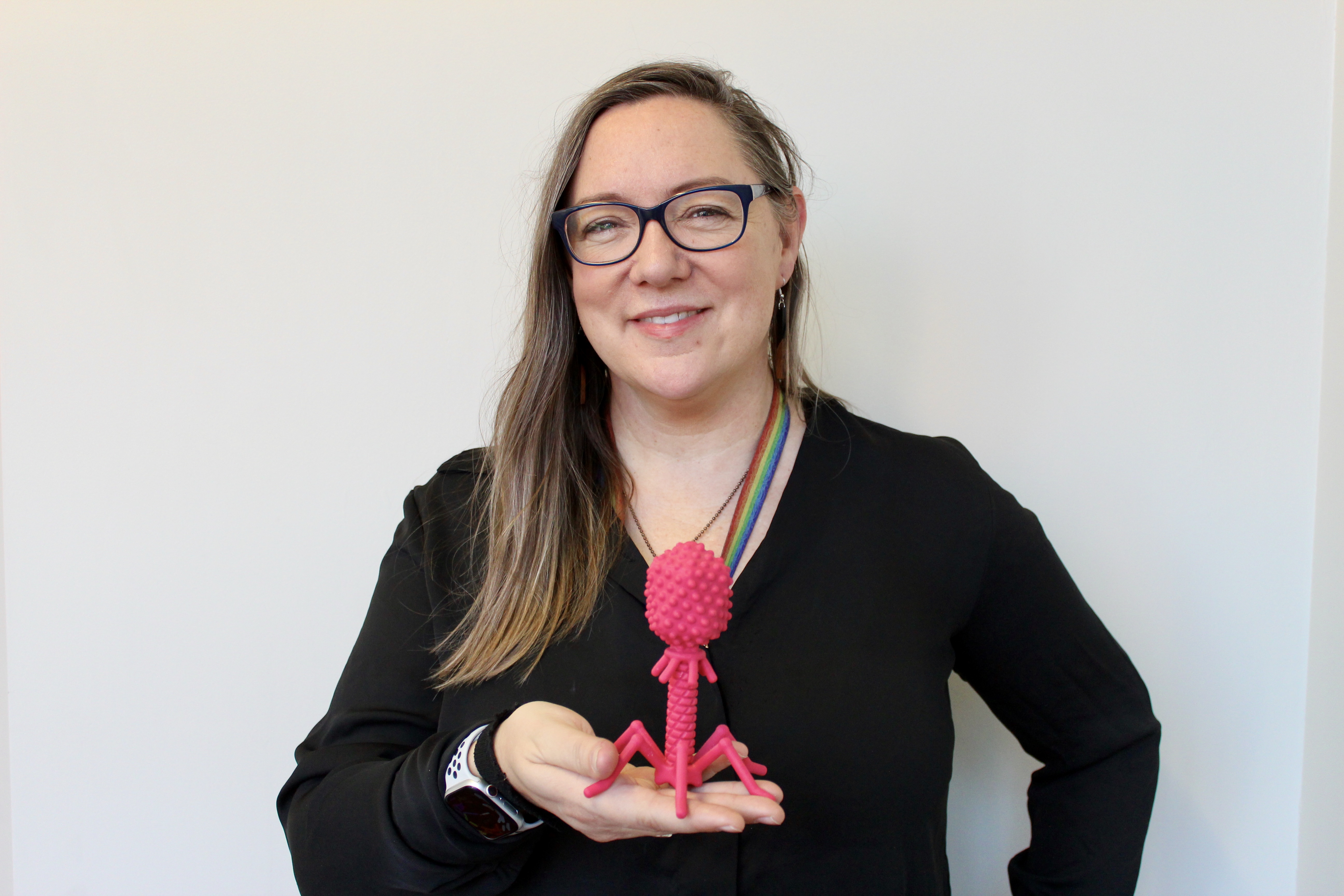Minister of Conservation Eugenie Sage joins Dr Michael Jackson on a tour of the Fragrance Library in UC’s School of Product Design.
A long-term, novel solution to help New Zealand achieve its predator free ambitions is a step closer, thanks to $1.4 million in Department of Conservation (DOC) funding for University of Canterbury (UC) research.
Dr Michael Jackson of UC’s School of Biological Sciences, is the latest recipient of DOC’s Tools to Market programme. He says he is passionate about restoring New Zealand’s native wildlife, a process that begins with the effective control of introduced pests including rats, weasels and stoats.
Dr Jackson plans to use the new funding to expand on an already successful long-life lure product he developed under previous Tools to Market funding. He hopes to adapt and refine it to create a multi-species lure that can be used to catch different types of predator.
“Our current rat lures emit a consistent smell for a sustained period of time, which means they’re always attractive. That means that if a rat doesn’t visit a trap box for five months it wouldn’t matter because the lure inside the box remains as attractive as it was on day one,” he explains.
“We developed our first lure only for rats, and that project gave us the skills and knowledge to know we can make a multi-species lure that will have the ability to catch other small mammals, like stoats, that New Zealanders want to keep well away from their native wildlife.”
For rats, peanut butter is the current go-to lure but it perishes quickly, which can render traps ineffective in days. Instead, Dr Jackson’s team found the ‘attractants’ or key chemical compounds in foods that the rats responded to, and used this for their lure.
At the heart of Dr Jackson’s new research is identification of the chemical compounds needed to attract multiple species.
Professor Matthew Turnbull, Head of UC’s School of Biological Sciences, says predation of native species has major impacts on our wildlife and the health of ecosystems.
“The work Mike and his team are doing, developing long-life lures, will lead to more efficient and humane pest control, and it’s critical to the nation’s aspirations to create a predator-free New Zealand by 2050.”
The multi-disciplinary research project spans UC’s Engineering and Science colleges, where Dr Jackson hopes to develop his lure products in the School of Biological Sciences, in close collaboration with the UC’s School of Product Design.
The success of this project is multi-layered, as Dr Jackson views the success of students involved on par with the success of his own research outcomes.
“We have three postgraduate students working with us and this is what it was all about for me – allowing as many people as possible the opportunity to get involved.
“It would be quite cool, at the end of this project, to see our Masters students graduate and maybe go on to their PhDs or into business, knowing they’ve been successful with their research.”
For UC Deputy Vice-Chancellor Professor Ian Wright, Dr Jackson’s work demonstrates UC’s commitment to research-led teaching and learning.
“The University of Canterbury is a place where world-class, solutions-based research happens, and this is another outstanding example of UC postgraduate students learning from and working with academics to address nationally significant issues that are very important for all New Zealanders.”
Dr Jackson says the ultimate goal is to see the team’s research deliver a tangible product.
“We want to create something for the long-term, sustainable protection of our national parks and New Zealand conservation.
“The successful development of this lure will provide effective long-term pest control while allowing our native species some much needed breathing space to get their population numbers up.”
The University of Canterbury research team includes:
- Dr Michael Jackson, Lead scientist – School of Biological Sciences (SBS)
- Dr Euan Coutts, School of Product Design
- Dr Ali Nazmi, School of Product Design
- Professor Jim Briskie, School of Biological Sciences
- Gemma Burnside, postgraduate student – School of Product Design
- Charlotte Jones, postgraduate student - animal behaviour (SBS)
- Brittney Heappey, Research assistant - animal behaviour (SBS)








IMG_4636.jpg)


